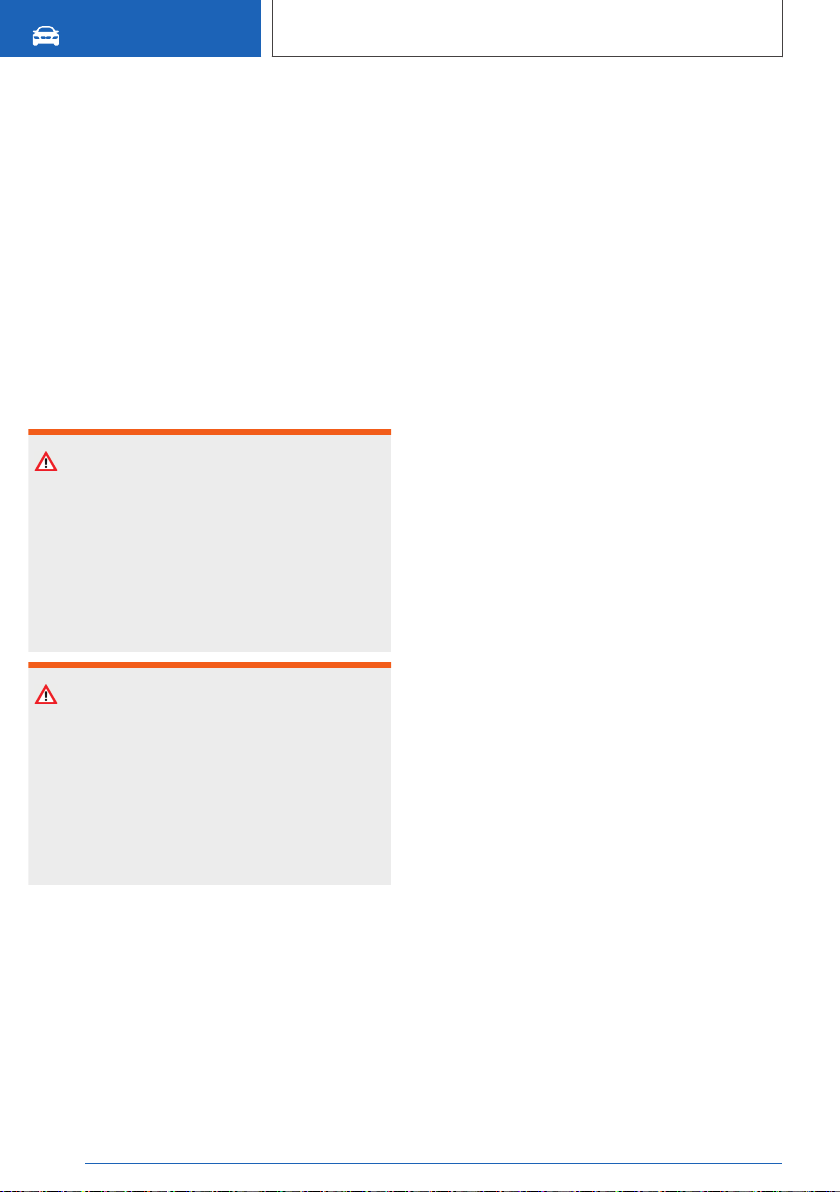Loading ...
Loading ...
Loading ...

TPM may not have been reset. In this case,
perform the reset.
If tire damage cannot be found, contact a
dealer’s service center or another qualified
service center or repair shop.
2. Repair the flat tire, e.g., with a flat tire kit or by
changing the wheel.
Use of sealant, for instance from the flat tire kit,
may damage the TPM wheel electronics. Have
the electronics replaced at the next opportunity.
Run-flat tires
Safety information
Warning
Your vehicle handles differently with a run-flat
tire with no or low inflation pressure; for in‐
stance, your lane stability when braking is re‐
duced, braking distances are longer and the
self-steering properties will change. There is a
risk of accident. Drive moderately and do not
exceed a speed of 50 mph/80 km/h.
Warning
Heavy trailers can start swinging when continu‐
ing to drive with a flat tire. There may be a risk
of accident or risk of damage to property. Do
not exceed a speed of 35 mph/60 km/h when
driving with a trailer and a flat tire. Immediately
brake in the case of swinging. Apply necessary
steering corrections as carefully as possible.
Maximum speed
You may continue driving with a damaged tire at
speeds up to 50 mph/80 km/h.
Continued driving with a flat tire
Follow the following when continuing to drive
with a damaged tire:
1. Avoid sudden braking and steering maneu‐
vers.
2. Do not exceed a speed of 50 mph/80 km/h.
3. Check the tire inflation pressure in all four
tires at the next opportunity.
Possible driving range with a
depressurized tire
The distance for which it may be possible to
drive safely varies depending on how the vehicle
is loaded and used, e.g., speed, road conditions,
external temperature. The driving range may be
less but may also be more if an economical driv‐
ing style is used.
If the vehicle is loaded with an average weight
and used under favorable conditions, the dis‐
tance for which it may be safe to drive may be up
to 50 miles/80 km.
Vehicle handling with damaged tires
Vehicles driven with a damaged tire will handle
differently, potentially leading to conditions such
as the following:
▷ Greater likelihood of swerving off course.
▷ Longer braking distances.
▷ Changed self-steering properties.
Modify your driving style. Avoid abrupt steering
maneuvers or driving over obstacles, for instance
curbs or potholes.
Final tire failure
Vibrations or loud noises while driving can indi‐
cate the final failure of a tire.
Reduce speed and stop; otherwise, pieces of the
tire could come loose and cause an accident.
Do not continue driving. Contact a dealer’s serv‐
ice center or another qualified service center or
repair shop.
Seite 350
MOBILITY
Wheels and tires
350
Online Edition for Part no. 01402667211 - VI/19
Loading ...
Loading ...
Loading ...